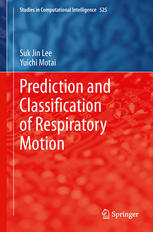

Most ebook files are in PDF format, so you can easily read them using various software such as Foxit Reader or directly on the Google Chrome browser.
Some ebook files are released by publishers in other formats such as .awz, .mobi, .epub, .fb2, etc. You may need to install specific software to read these formats on mobile/PC, such as Calibre.
Please read the tutorial at this link: https://ebookbell.com/faq
We offer FREE conversion to the popular formats you request; however, this may take some time. Therefore, right after payment, please email us, and we will try to provide the service as quickly as possible.
For some exceptional file formats or broken links (if any), please refrain from opening any disputes. Instead, email us first, and we will try to assist within a maximum of 6 hours.
EbookBell Team

0.0
0 reviewsThis book describes recent radiotherapy technologies including tools for measuring target position during radiotherapy and tracking-based delivery systems.
This book presents a customized prediction of respiratory motion with clustering from multiple patient interactions. The proposed method contributes to the improvement of patient treatments by considering breathing pattern for the accurate dose calculation in radiotherapy systems. Real-time tumor-tracking, where the prediction of irregularities becomes relevant, has yet to be clinically established. The statistical quantitative modeling for irregular breathing classification, in which commercial respiration traces are retrospectively categorized into several classes based on breathing pattern are discussed as well. The proposed statistical classification may provide clinical advantages to adjust the dose rate before and during the external beam radiotherapy for minimizing the safety margin.
In the first chapter following the Introduction to this book, we review three prediction approaches of respiratory motion: model-based methods, model-free heuristic learning algorithms, and hybrid methods. In the following chapter, we present a phantom study—prediction of human motion with distributed body sensors—using a Polhemus Liberty AC magnetic tracker. Next we describe respiratory motion estimation with hybrid implementation of extended Kalman filter. The given method assigns the recurrent neural network the role of the predictor and the extended Kalman filter the role of the corrector. After that, we present customized prediction of respiratory motion with clustering from multiple patient interactions. For the customized prediction, we construct the clustering based on breathing patterns of multiple patients using the feature selection metrics that are composed of a variety of breathing features. We have evaluated the new algorithm by comparing the prediction overshoot and the tracking estimation value. The experimental results of 448 patients’ breathing patterns validated the proposed irregular breathing classifier in the last chapter.